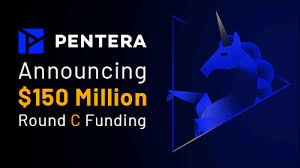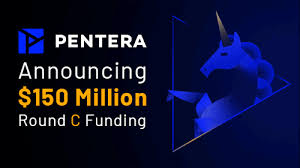Funding Bias: When Money Quietly Rewrites Scientific Truth and Lives
Money can’t run experiments, yet it silently authors their conclusions. That contradiction drives Elena Márquez’s exposé of “funding bias,” the statistical mirage turning mediocre products into medical miracles. Tonight she faces sponsors bankrolling the very conference stage beneath her. Márquez unveils an erased glucose-monitor trial, salvaging the data on an encoded securely drive after lawyers demanded destruction. Regulators chant transparency, but contracts still muzzle investigators with publication gag orders. Industry-funded studies prove four times likelier to declare victory, fundamentally changing guidelines and stock prices alike. Analyzing these invisible levers becomes urgent because patients, not executives, swallow the pills. So: How big is the distortion, who benefits, and which fixes genuinely bite? This report delivers the numbers, the culprits, and the itinerary.
What exactly is funding bias?
Funding bias occurs when research outcomes lean toward a sponsor’s interest, not aim truth. It is systemic, contract-embedded, and often invisible to peer reviewers because raw data ownership stays locked behind walls.
How large is its lasting results?
Meta-analyses show industry funding multiplies positive findings three-to-fivefold. In drug trials alone, biased conclusions can redirect billions in healthcare spending and guide clinical guidelines, shaping therapies prescribed to millions of patients worldwide.
Who benefits from tilted data?
Sponsor executives gain , compliant researchers get grants, and journals harvest report fees. Meanwhile regulators face political pressure to appear decisive, so the quiet loser is the patient expecting honest evidence.
Which safeguards are working now?
Pre-registration mandates, independent data-observing advancement committees, and fines for withheld results are starting to bite. ClinicalTrials.gov enforcement boosted registrations, and NIH open-data rules now force raw datasets online, inviting community-created scrutiny within hours.
Can open data solve everything?
Open repositories democratize access but cannot alone fix perverse incentives. Without cultural change—crediting replication, rewarding null results—well-funded actors will move bias upstream into study design, past what transparency tools can show.
What actions should readers take?
Ask clinicians for trial audits, read risk not percentages, and verify protocols against publications. As voters, demand policies linking tax credits to open data. Watchful reading, multiplied widely, exerts unavoidable pressure.
“`
Funding Bias: How Money Quietly Rewrites Science
The ballroom smells of burnt coffee; a projector fan hisses a tired whisper. At the podium stands Elena Márquez—born in Seville 1978, studied pharmacology at Granada, earned a Johns Hopkins Ph.D., known for data-integrity crusades, splits time between Barcelona’s Hospital Clínic and Brussels hearings. Her heartbeat quickens, then silence. “Stories carry light,” she begins, eyes moist with restrained tears, “but money can bend that light.” A ripple of uneasy laughter follows. Ironically, many sponsors bankrolling tonight’s posters are the very shadows she’s about to expose.
Concealed Results: 2017’s Vanished Glucose Trial
“We enrolled 483 diabetics, triple-blind, flawless design,” she recalls. Monitors beeped like frantic Morse; disinfectant tinged the air. The sponsor’s sensor underperformed a generic, so lawyers ordered data destruction. She kept an encoded securely copy—“because knowledge is a verb, not a noun.”
What Is Funding Bias & Why Does It Persist?
Funding bias—the “funding effect”—occurs when results tilt toward a sponsor’s interest. Unlike random error, it’s systematic, incentive-driven, and contract-enforced. A BMJ meta-analysis found industry-funded trials four times likelier to report positive outcomes.
Four Common Vectors
- Design – Favorable comparators, soft endpoints.
- Analysis – P-hacking, selective omission.
- Publication – Delays or gag orders.
- Spin – Adverse events downplayed, benefits hyped.
Regulators Finally React—But Is It Enough?
In Washington, Hon. Brandon Lee—born Detroit 1969, Yale JD, known for surgical cross-exams, splits time between mahogany-lined office and Senate dais—pounded a gavel at a 2021 FDA hearing. “If data can be bought, so can public health,” he declared, inbox now bloated with white papers rather than donations—wryly, a Capitol Hill rarity.
Stakeholders & Their Conflicting Heartbeats
Researchers: Careers on a Fiscal Leash
Aisha Khan—born Karachi 1985, studied biostatistics at MIT, known for color-coded R scripts—explains: “Grant renewals use a gravitational pull strong enough to bend truth.” Refrigerators hum a mechanical heartbeat behind her.
Journals: Gatekeepers or Bouncers?
Page budgets shrink; article-processing charges rise. Special-issue sponsorships dangle easy revenue, nudging editors toward leniency despite ICMJE disclosure rules.
Industry: Numbers Over Develop
Pharma CFOs quips, “Negative trials are expensive press releases.” One bad study can vaporize billions in a single analyst’s breath.
Patients: Silent Costs
In a São Paulo oncology ward, eight-year-old Felipe clutches a plush dinosaur although IV fluid drips. His mother’s tears never appear in any conflict-of-interest formulary.
Hard Numbers: How Big Is the Funding Effect?
| Meta-study | Field | Funding Source | Positive-Result Multiplier |
|---|---|---|---|
| Lexchin 2003 | Pharma | Industry | 4.05× |
| Lundh 2017 | Devices | Industry | 3.20× |
| Sismondo 2008 | Nutrition | Food Cos. | 5.30× |
Structural Fixes Gaining Traction—Yet Gaps Persist
Open-Data Mandates
NIH 2023 policy forces raw-data release, turning once-silent freezers into public GitHub repos.
ClinicalTrials.gov Penalties
Fines now hit $23 000/day; registrations jumped 17 % (JAMA 2022).
Algorithmic Audits
COMPARE Trials crawlers wryly “sniff out missing p-values like truffle pigs.”
Case Files: Courage, Cost, & Compromise
#1 — The Sued Hematologist
Nancy Olufemi—born Lagos 1971, King’s College London hematologist—flagged erythropoietin risks; the sponsor sued for $15 million. Five years later the drug earned a black-box warning. She quips, “Blood carries oxygen—and liability.”
#2 — Nutrition’s Retraction Avalanche
Cornell’s Food & Brand Lab yanked 15 papers after emails showed “desired outcomes” for beverage funders, shaping USDA draft guidelines before collapse.
How to Defuse Funding Bias: A Five-Step Approach
- Pre-register hypotheses on ClinicalTrials.gov to freeze goalposts.
- Rotate independent data-monitoring committees; publish minutes within 30 days.
- Deposit raw data in open repositories (e.g., Zenodo) under CC-BY license.
- Cap any single sponsor at 40 % of project budget to dilute leverage.
- Adopt blind analysis: third-party coders label datasets; investigators stay sponsor-blind until lock.
Time needed: Grant-cycle planning phase (≈ 6 weeks).
Quick Wins: Actions for Tomorrow Morning
- Researchers – Add a “funding influence” statement linking your raw-data DOI.
- Reviewers – Request protocol vs. manuscript comparison using the CONSORT checklist.
- Clinicians – Cross-check treatments on Cochrane Library evidence maps.
- Policy-makers – Condition tax credits on open-data compliance clauses.
- Patients – Ask if your therapy’s trial was independently audited—bring that dinosaur for moral support.
People Also Ask
Is funding bias actually illegal?
Not by itself. Fraud is criminal; bias exploits legal contract clauses that restrict data ownership and publication rights.
Why don’t journals block biased studies?
Economic pressures, reviewer scarcity, and difficulty proving intent make outright rejection rare.
Do charities introduce bias too?
Yes. Disease-advocacy groups often fund trials aiming to confirm specific therapies, nudging design choices.
Which fields are most vulnerable?
High-stakes arenas—pharmaceuticals, nutrition, chemical toxicology, and algorithmic medical AI.
How can readers detect “spin” quickly?
Compare headline claims with absolute risk numbers; oversized relative percentages often mask minimal real-world lasting results.
Clear Ink: The Only Antidote
Márquez snaps her laptop shut; the AC exhales a tired breath. Applause swells, mingling with relieved laughter. “Science without integrity,” she whispers, “is just expensive video marketing.” Tram bells clang outside—one last metallic heartbeat reminding us vigilance never clocks out.

Pivotal Sources
“`
